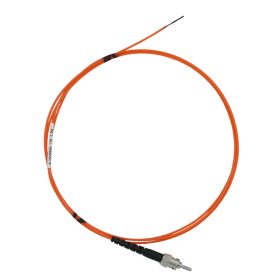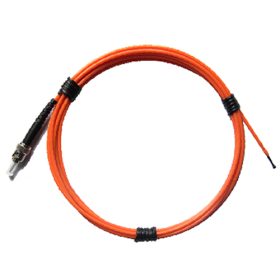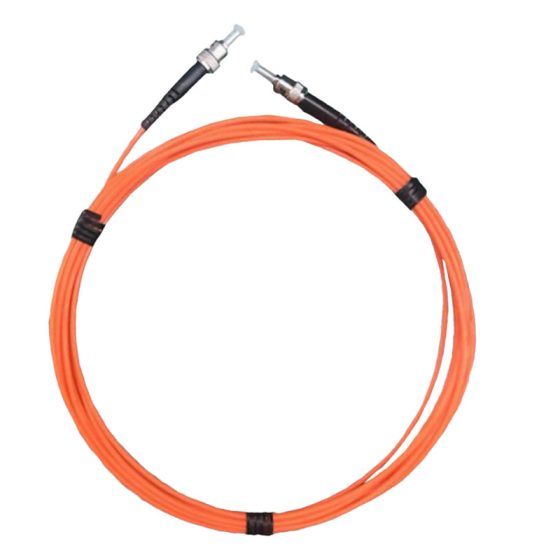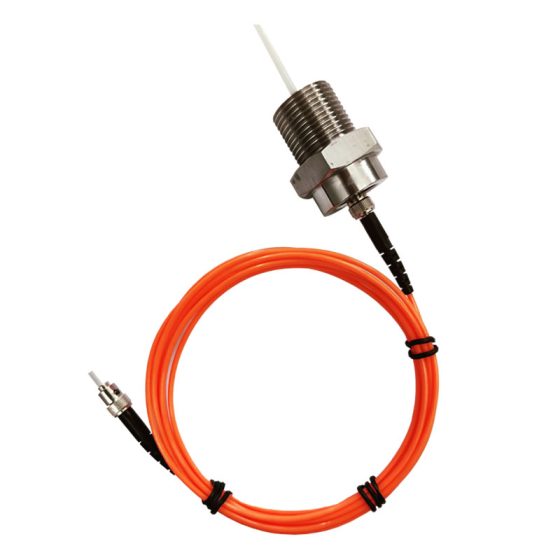The length, Genauigkeit, temperature measurement range, fiber diameter, and sheath material of fiber optic temperature sensors can be customized according to your needs. Please contact us for consultation!
Fluorescent fiber optic temperature sensing probes have many advantages that other temperature sensing probes cannot compare to, such as good electrical insulation, Beständigkeit gegen elektromagnetische Störungen, chemical corrosion, and no pollution. This makes fluorescent sensing probes not only used in many fields such as biology and medicine, but also have broad application prospects in the power industry. They are mainly used for temperature measurement of high-voltage instruments in electrical equipment, temperature measurement between generator diagnostic systems and transformer windings, temperature measurement of high-voltage circuit breaker contacts, and temperature measurement of high-voltage cable joints.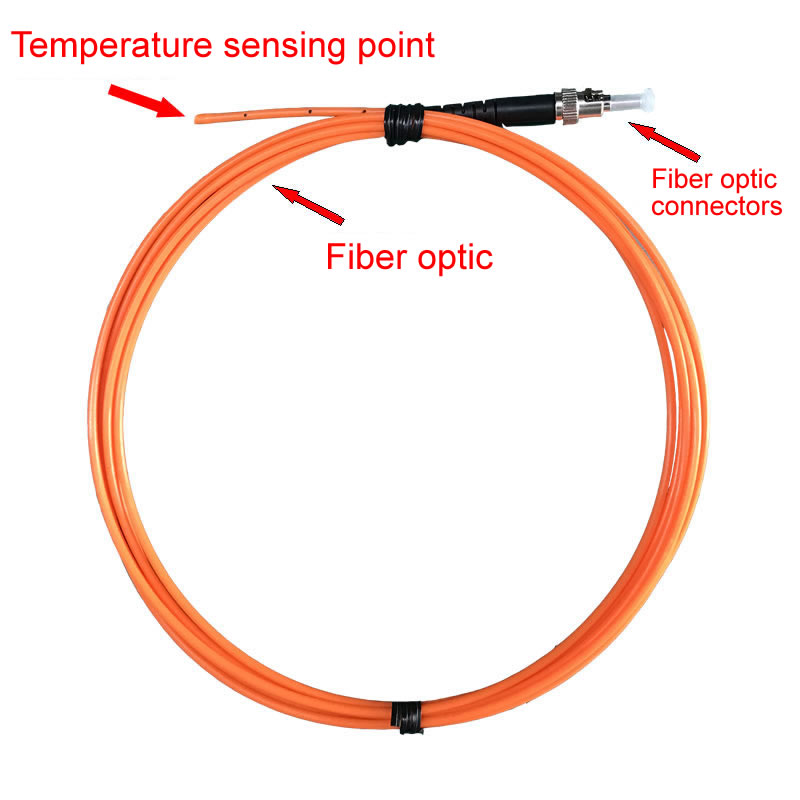
Introduction to Fluorescent Fiber Optic Sensing Probes
Die faseroptische Sonde besteht aus drei Teilen: ST-Steckverbinder, Glasfaserkabel, und Endtemperaturmessung Ende. Der ST-Steckverbinder ist das Verbindungsteil mit der Lichtschranke; Glasfaserkabel ist der Übertragungsteil, mit Quarzfaser im Inneren. Die Quarzfaser hat auf der Außenseite eine Beschichtung und eine Ummantelung, und eine Teflon-Schutzhülle am äußersten Teil; Das Ende der Temperaturmessung enthält Seltenerdmaterialien zur Temperaturmessung, die zur Erzeugung optischer Signale mit Temperaturinformationen verwendet werden; Die optische Faser ist beständig gegen hohe Temperaturen von 200 °C und hat einen Außendurchmesser von 3mm. Langfristiger Biegeradius von 13,2 cm. Kurzfristiger Biegeradius von 4,4 cm. Wenn der Abstand zwischen dem Glasfaserkabel und der Erde 0,4 m beträgt, Es kann einer Netzfrequenzspannung von 100 kV für eine Dauer von 5 Protokoll.

The Temperature Measurement Principle of Fluorescent Faseroptischer Temperatursensor
Ein fluoreszierender faseroptischer Temperatursensor besteht aus einer Multimode-Faseroptik und einem fluoreszierenden Objekt (Membran) oben installiert. Fluoreszierende Substanzen geben Fluoreszenzenergie ab, wenn sie durch Licht einer bestimmten Wellenlänge stimuliert werden (stimuliertes Spektrum). Nachdem der Anreiz widerrufen wurde, Die Persistenz des Fluoreszenz-Nachleuchtens hängt von Faktoren wie den Eigenschaften der fluoreszierenden Substanz und der Umgebungstemperatur ab. Diese angeregte Fluoreszenz zerfällt in der Regel exponentiell, und die Abklingzeitkonstante wird als Fluoreszenzlebensdauer oder Fluoreszenznachleuchtzeit bezeichnet. Die Dämpfung des Fluoreszenz-Nachleuchtens variiert bei unterschiedlichen Umgebungstemperaturen. Deshalb, durch Messung der Lebensdauer des Fluoreszenz-Nachleuchtens, Die Umgebungstemperatur zu diesem Zeitpunkt kann bestimmt werden.

 INNO faseroptische Temperatursensoren ,Temperaturüberwachungssysteme.
INNO faseroptische Temperatursensoren ,Temperaturüberwachungssysteme.


